“DaPesca brings honor to New Jersey’s fishes and fishing industry and fills a void in fine dining…created by restaurateurs and chefs who have failed to place local fishes on a proper pedestal.”
By Andy Clurfeld
Set back from the main drag of Morristown is the old Vail Mansion, a formidable structure that could, and once did, house any number of governmental offices in this, the county seat of Morris. Instead, it is home to four distinctive eating-and drinking entities that have, under its reinvention as Jockey Hollow Bar & Kitchen, become the dining-out headquarters in north-of-the-Raritan New Jersey for the tuned-in, private jet, chef’s-on-a-night-off, wine geek and raw-bar-loving sets. Translation: It’s the high-style crowd’s home away from home.
Christopher Cannon, late of the New York City restaurant scene, where he won James Beard Awards for Marea and L’Impero, came to New Jersey by way of marriage. Becky, his wife, grew up in North Jersey and knew it was ready for a visionary. Chris Cannon is a visionary.

Photos by AJ Sankofa/Courtesy of dePesca
For a time, Cannon was a visionary without a place to practice his progressive restaurant ways. A bitter divorce from his New York restaurant partners left him without dining rooms and bars to pour the artisan, quirky, impossible-to-find wines he was known for—and without a constant stream of fans looking to partake in the latest “Cannonball” blind wine-tastings. So the Cannons and their kids moved to Becky’s home state, and Chris Cannon started looking around for the perfect place to create a public space. Hey, why not a circa-1917 mansion on South Street in Morristown? What might intimidate most only inspires an industry veteran who appears to live by the motto, “If something’s easy, how can it be fun?”
Three years ago, Jockey Hollow became The Oyster Bar, which rocks nearly nonstop with pristine raw fishes, charcuterie, and plates small and large; The Vail Bar, a speakeasy-style hideaway where the go-getters and the glamorous convene over cocktails and fine fare; the Rathskeller, the basement beer hall-private events space that used to serve as Morristown’s very own jail and now hauls ‘em in for live music and top-tier craft brews to wash down German grub; and, upstairs, a somehow-intimate 70-seat fine-dining space.

Photos by AJ Sankofa/Courtesy of dePesca
You can explore the bars at your leisure. Right now, we’re talking about that upstairs restaurant-within-a-restaurant that the father of reinvention himself reimagined this winter as DaPesca.
DaPesca brings honor to New Jersey’s fishes and fishing industry and fills a void in fine dining that, inexplicably, in our state bordered by 130 miles of ocean, not to mention rivers and bays and myriad and many lakes has been created by restaurateurs and chefs who have failed to place local fishes on a proper pedestal. Cannon was bothered by this. Having recently acquired a chef as formidable as the mansion turned- restaurant itself—Craig Polignano, ex-Ryland Inn, among other high-end restaurants—to take charge of all things food at Jockey Hollow, and having developed an association with Eric Morris, founder and owner of Local 130, the New Jersey seafood specialist, Cannon was ready to shame the gun-shy of the Garden State. DaPesca does just that.
Sourcing primarily from Local 130, as well as Forty North Oysters, the Barnegat Oyster Collective and Sona-Far Hills Seafood, DaPesca names on its ever-changing menus the boats and their captains who fish off our coastlines and make possible what Polignano and his kitchen crew create.

Photos by AJ Sankofa/Courtesy of dePesca
If you eat at DaPesca regularly, captains such as Jim Lovgren and Eric Myklebust might become your guidestars for how to order.
There really is no better way.
For the Barnegat clams, sparked by a wispy ring of Calabrian chile, and the local oysters, with their slurpy salinity and ping of minerality, pave the way to a Spanish mackerel crudo set atop a tangle of cucumber strands spliced with puffed rice and scented with the penetrating power of yuzu. That intense citrus tames the mackerel, probably my favorite fish on the planet, and infuses the toasty puffed rice scattered about with unexpected freshness. The dish shows how inspiration can take hold. You’ll find the calamari á la plancha a revelation, especially if you’ve been eating the same-old, same-old renditions for a generation or so. Here, the local stuff isn’t fried and sent out to pasture with tomato sauce, but given an Asian twist with tamarind and noodles of papaya, Balinese peppers, and peanuts that act as so much more than a give-away garnish. I learned something new about calamari’s versatility in every bite. Our local tuna, too, took a spiritual trip to the Far East when Polignano chose to plate it in a pho-style broth scented with Thai basil and popping with crunchy sprouted mung beans. Polignano and Cannon readily admit pledging allegiance to the flag of Italy, culinary religion in New Jersey, after all. Which brings us to the pasta-risotto portion of the menu: Don’t pass by the “little hats” of pasta—cappellacci stuffed with nuggets of braised pork—that are set in a rich shellfish broth with little clams spurting big juices. Those curious counterpoints to the clam-pork duet? Beech mushrooms. They sop it all up. Meanwhile, the pinched logs of dostalini stuffed with the buttery-tangy Piedmontese cheese castelrosso take to a saucy combo of orange and puntarella, a hopped-up chicory, along with a side crumble of pistachios; and the risotto is positively daring, what with crab dancing with almost-sweet Meyer lemon and a verdant, rough chop of seaweed pesto working pine nuts not ground into the mix, but left whole and therefore more forceful. You know skate wing, right? Well, be prepared for something completely different here, as Polignano turns it on its ear. It’s twirled into something that looks like a mini muffin and partnered not just with the classic caper-butter duo, but with an Italianate twist of roasted cauliflower and grapes. This silky-textured, mild fish always tastes ever so slightly nutty to me. Well, darned if the chef doesn’t give his skate a flourish of hazelnuts at the finish. Bingo. Dayboat scallops are done simply and right here, with a slaw-like base of celery root and apple, cubes of potato and mysterious notes of black truffle that appear when least expected. The best lobster dish I’ve ever had in New Jersey is Polignano’s butter-poached lobster, which yins against the yang of translucent curls of fennel and threads of tarragon. But it’s the frothy bouillabaisse cream that did me in: How boffo is the rich-on-rich marriage of lobster and shellfish bubbles?

Photos by AJ Sankofa/Courtesy of dePesca
Not everything at DaPesca is divinity of the sea. I don’t get the need to wrap monkfish in prosciutto like the minions do, especially when sidemen include olives and sausage that only add to the oversalted taste of the dish. I also hope the squid ink gnocchi, with more squid on the plate, is nixed by now since it was mushy in texture and muddy of flavor. Desserts, too, need work: I’m not a fan of oversize anything, but the two cubes of lackluster carrot cake with a two-bite torpedo of mascarpone ice cream ain’t worth $4, let alone $14, and the trio of sorbets—blood orange, cranberry, and Meyer lemon—had awkward shards of ice within.
Next time, I’ll nab another round of the butter-poached lobster and see if I can get an extra bowl of that bouillabaisse froth. I’ll bring fish-shunners to sit at my table so I can order extras of the calamari and skate and mackerel and dive into their plates without competition. I’ve been looking for a big-ticket seafood joint like this for decades. DaPesca is where my odyssey ends.
NEW JERSEY’S BEST WINE LIST?
Chris Cannon may be over-the-moon about Jersey’s fishes, a fanatic about forging relationships with Garden State farmers and fascinated with the history of his newly adopted state, but there’s nothing more he loves than wine. Unless it’s the collection of eyeglass frames he’s amassed with a fervor that could be described as manic. But that’s a story for another issue of Edge. Cannon has the most idiosyncratically desirable wine list I know, a list that you’re given to scan on an iPad as you are seated, but really deserves a conducted class by itself on a day when Jockey Hollow is otherwise closed. Think a library-style, hushed opportunity to sit and read, and re-read a list that seems like it cannot be real. But it’s a list he’s been working on most of his adult life, establishing connections with importers, distributors, and winemakers, forging relationships with wine names major and utterly obscure. Frankly, Cannon’s tastes tilt to the obscure.
But his prices lean friendly. The centerpiece of his wine program is an evolving, always-changing list of “60 Under $60.” It’s a treasure trove of wines you never thought you’d be able to try, of grapes you’ve never heard of from winemaking regions that have no beaten paths, of styles that will teach you how to pair wine with food once and for all. Cannon and his floor crew love talking wine at the table with their guests, and they love sharing their latest finds. If you’re so inclined, give a call to arrange a “Cannonball” wine adventure, in which the wine maestro himself will pour—blind—wines largely from this “60 Under $60” list and guide you through the tasting. The Cannonball experience takes place on Fridays.
No matter where you dine at Jockey Hollow, you can take advantage of New Jersey’s best wine list.
DaPesca
At Jockey Hollow Bar & Kitchen • 110 South Street, Morristown • Phone: (973) 644.3180
Reservations accepted and recommended; major credit cards. Open for dinner Tuesday and Wednesday from 5 to 9 p.m., Thursday from 5 to 9:30 p.m., Friday and Saturday from5 to 10:30 p.m. A four-course tasting menu is $86, while a seasonal six-course tasting to be ordered by the entire table is $116. (With wine pairings, the six-course menu is $190.)
A la carte service is available at DaPesca except on Saturdays when only the tasting menus are served. For more information, visit www.jockeyhollowbarandkitchen.com.





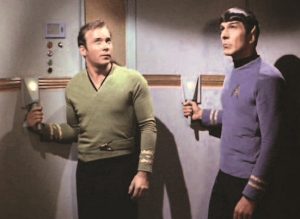

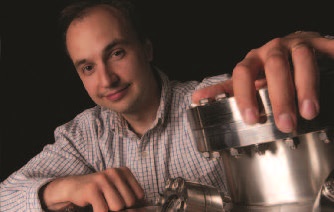
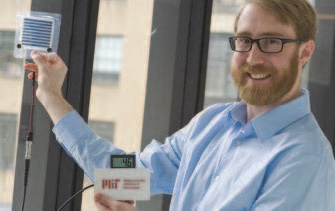



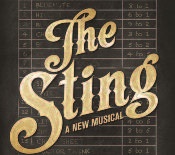


 April 15
April 15
 April 21
April 21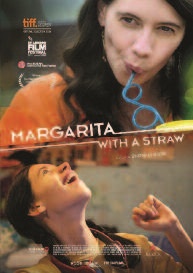


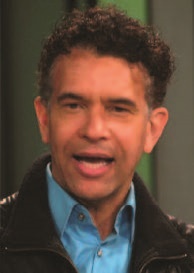
 April 20
April 20 May 12
May 12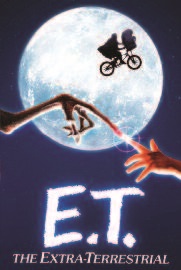

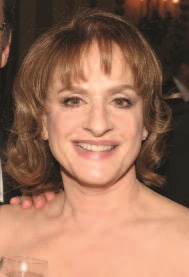


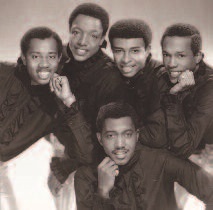
 May 18 & 19
May 18 & 19
 Cryotherapy is an ergonomic modality used to address a wide range of aches, pains and medical conditions. It also has benefits for athletes looking to improve their performance. The ancient Greeks and Romans used cryotherapy (immersion in chilly seawater) to treat inflamed wounds. In the 19th century, European medicine rediscovered this technique. A couple of generations ago, cryotherapy looked a lot different: a bag of ice wrapped around a knee or shoulder, a chilled whirlpool bath. In the 1970s, Japanese researcher Dr. Toshiba Yamauchi pioneered the concept of whole-body cryotherapy to treat rheumatoid arthritis and, in doing so, began to notice its therapeutic side effects for subjects who suffered from injuries and chronic inflammation. Since then, there has been a huge amount of medical information coming out about this technology and how it can benefit the human body in myriad ways.
Cryotherapy is an ergonomic modality used to address a wide range of aches, pains and medical conditions. It also has benefits for athletes looking to improve their performance. The ancient Greeks and Romans used cryotherapy (immersion in chilly seawater) to treat inflamed wounds. In the 19th century, European medicine rediscovered this technique. A couple of generations ago, cryotherapy looked a lot different: a bag of ice wrapped around a knee or shoulder, a chilled whirlpool bath. In the 1970s, Japanese researcher Dr. Toshiba Yamauchi pioneered the concept of whole-body cryotherapy to treat rheumatoid arthritis and, in doing so, began to notice its therapeutic side effects for subjects who suffered from injuries and chronic inflammation. Since then, there has been a huge amount of medical information coming out about this technology and how it can benefit the human body in myriad ways.

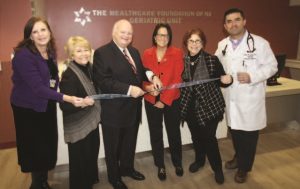
 By definition, the HFNJ’s mission is to improve the health and well-being of vulnerable, underserved populations in greater Newark and the Jewish Community of MetroWest NJ, to elevate the quality of community healthcare, reduce disparities in access, and promote the infusion of compassion and humanism into our healthcare system. Dr. Beth Levithan, chair of the HFNJ, who joined the board in 1997, is most proud of the HFNJ’s commitment to humanism.
By definition, the HFNJ’s mission is to improve the health and well-being of vulnerable, underserved populations in greater Newark and the Jewish Community of MetroWest NJ, to elevate the quality of community healthcare, reduce disparities in access, and promote the infusion of compassion and humanism into our healthcare system. Dr. Beth Levithan, chair of the HFNJ, who joined the board in 1997, is most proud of the HFNJ’s commitment to humanism.











 Poets have been writing odes to mothers for a thousand years. Baby books have been offering advice to moms for a century. Alas, no words convey the true essence of motherhood quite like the intimate moments captured through the lens of celebrated lifestyle photographer Sue Barr. Her work offers an honest and engaging window into what it looks like to be a modern New Jersey mom.
Poets have been writing odes to mothers for a thousand years. Baby books have been offering advice to moms for a century. Alas, no words convey the true essence of motherhood quite like the intimate moments captured through the lens of celebrated lifestyle photographer Sue Barr. Her work offers an honest and engaging window into what it looks like to be a modern New Jersey mom.




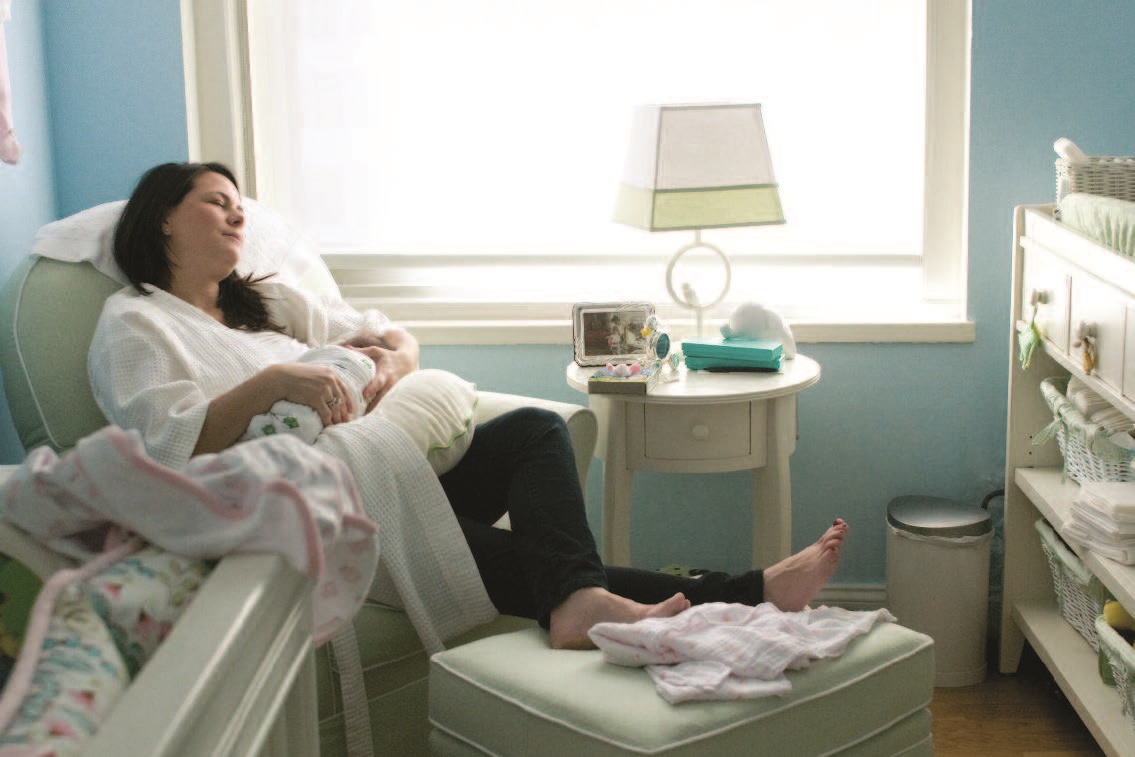




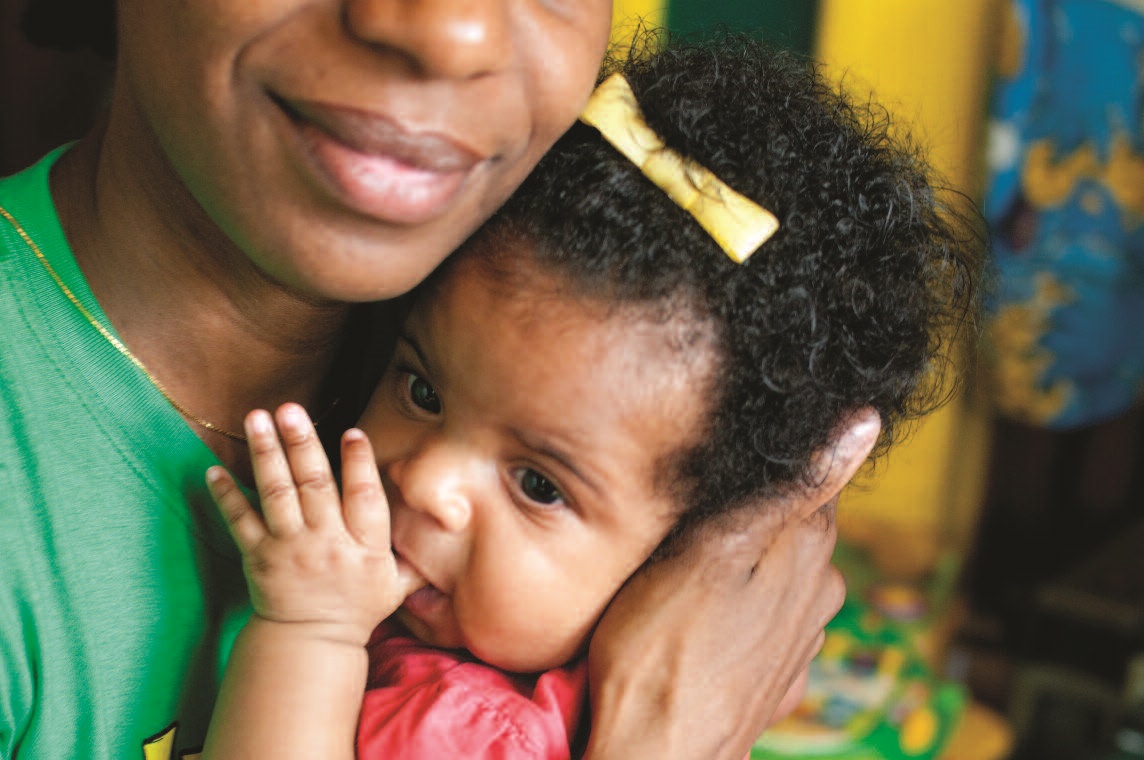





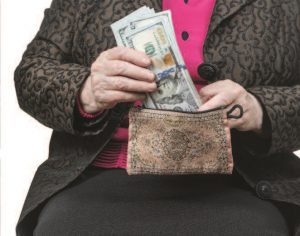


 Paragon Tap & Table • Beef Ramen
Paragon Tap & Table • Beef Ramen Arirang Hibachi Steakhouse • Wasabi Crusted Filet Mignon
Arirang Hibachi Steakhouse • Wasabi Crusted Filet Mignon Daimatsu • Sushi Pizza
Daimatsu • Sushi Pizza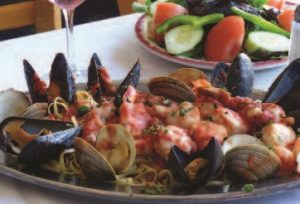 The Barge • Cioppino
The Barge • Cioppino Luciano’s Ristorante & Lounge • Pan Seared Scallops
Luciano’s Ristorante & Lounge • Pan Seared Scallops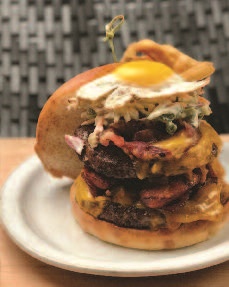 Morris Tap & Grill • The Monster Burger
Morris Tap & Grill • The Monster Burger Garden Grille • Roasted Garlic & Herb Rubbed Grilled Sirloin
Garden Grille • Roasted Garlic & Herb Rubbed Grilled Sirloin LongHorn Steakhouse • Outlaw Ribeye
LongHorn Steakhouse • Outlaw Ribeye Outback Steakhouse • Bone-In Natural Cut Ribeye
Outback Steakhouse • Bone-In Natural Cut Ribeye Arirang Hibachi Steakhouse • Volcano Roll
Arirang Hibachi Steakhouse • Volcano Roll Ursino Steakhouse & Tavern • House Carved 16oz New York Strip Steak
Ursino Steakhouse & Tavern • House Carved 16oz New York Strip Steak Vine Ripe Markets • Filet Crostini with Horseradish Cream Sauce
Vine Ripe Markets • Filet Crostini with Horseradish Cream Sauce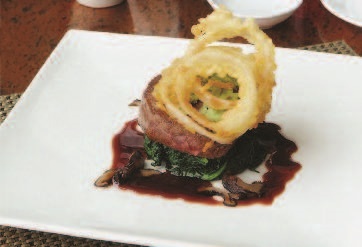








 Making my way from a coffee shop to the Ho Chi Minh Mausoleum is as jarring as it gets for an American war veteran. Not too far away is a monument to John McCain’s seizure at Truch Bac Lake (left), commemorating where he parachuted after being shot down in 1967. Equally disconcerting was passing through the doors of Hoa Lo Prison (aka the Hanoi Hilton), where captured soldiers and airmen were subjected to deprivation and torture. American POWs had more prescient gallows humor than they knew. The twenty-five-story Hanoi Towers overshadows the infamous prison these days. The day I visited Hanoi’s university, the Temple of Literature, built in 1076, I watched proud parents taking pictures of recent grads with their diplomas. They were happy to pose with me, too.
Making my way from a coffee shop to the Ho Chi Minh Mausoleum is as jarring as it gets for an American war veteran. Not too far away is a monument to John McCain’s seizure at Truch Bac Lake (left), commemorating where he parachuted after being shot down in 1967. Equally disconcerting was passing through the doors of Hoa Lo Prison (aka the Hanoi Hilton), where captured soldiers and airmen were subjected to deprivation and torture. American POWs had more prescient gallows humor than they knew. The twenty-five-story Hanoi Towers overshadows the infamous prison these days. The day I visited Hanoi’s university, the Temple of Literature, built in 1076, I watched proud parents taking pictures of recent grads with their diplomas. They were happy to pose with me, too. Hanoi was only one stop on my three-week odyssey. In South Vietnam, my friends and I idled a few days in the seaside resort of Vung Tau, called Cap Saint-Jacques by the French. Gorgeous mountain lookouts and theme parks feature huge statues: the Buddha atop one and Jesus another. Our B&B was opposite a wonderful seafood restaurant, where we dined among what looked like members of Vietnamese high society celebrating Christmas. In Ho Chi Minh City (formerly Saigon), Christmas carols blasted day and night from commercial malls and government offices everywhere in the Communist metropolis. Gift-wrapped packages were stacked in store windows, hotel clerks wore red Santa Claus hats, and Christmas trees were decorated with bright lights and outsized ornaments. The incongruity of it all suggested we may have lost the military conflict, but we won the cultural war. The Vietnamese may have to decide one day if that’s a good thing
Hanoi was only one stop on my three-week odyssey. In South Vietnam, my friends and I idled a few days in the seaside resort of Vung Tau, called Cap Saint-Jacques by the French. Gorgeous mountain lookouts and theme parks feature huge statues: the Buddha atop one and Jesus another. Our B&B was opposite a wonderful seafood restaurant, where we dined among what looked like members of Vietnamese high society celebrating Christmas. In Ho Chi Minh City (formerly Saigon), Christmas carols blasted day and night from commercial malls and government offices everywhere in the Communist metropolis. Gift-wrapped packages were stacked in store windows, hotel clerks wore red Santa Claus hats, and Christmas trees were decorated with bright lights and outsized ornaments. The incongruity of it all suggested we may have lost the military conflict, but we won the cultural war. The Vietnamese may have to decide one day if that’s a good thing In 1969, as a young Army lieutenant, I flew along the Cambodian border in a Birddog observation plane, spending my days looking for North Vietnamese troops. The bomb-cratered landscape I surveilled resembled the moon Neil Armstrong stepped onto that same year. Occasionally, what sounded like the intermittent buzzing of mosquitos around our plane drew my attention to muzzle flashes from shooters a thousand feet below. As quickly as they appeared, they skedaddled into their hidey-holes on the side of the border we weren’t supposed to cross. Being a target of small arms fire will instantly snap you out of revaries contemplating the natural scenic beauty of Vietnam. And out of the remorse for what a large country can do to destroy a small one.
In 1969, as a young Army lieutenant, I flew along the Cambodian border in a Birddog observation plane, spending my days looking for North Vietnamese troops. The bomb-cratered landscape I surveilled resembled the moon Neil Armstrong stepped onto that same year. Occasionally, what sounded like the intermittent buzzing of mosquitos around our plane drew my attention to muzzle flashes from shooters a thousand feet below. As quickly as they appeared, they skedaddled into their hidey-holes on the side of the border we weren’t supposed to cross. Being a target of small arms fire will instantly snap you out of revaries contemplating the natural scenic beauty of Vietnam. And out of the remorse for what a large country can do to destroy a small one.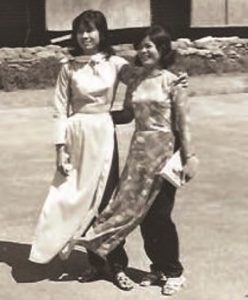 Nga motioned for me to sit. She kept leaving the small kitchen area to compose herself and catch her breath. She said something about me being like a detective to find her, still in shock until she finally settled beside me. I’d brought along some old pictures. Our great friend Hung, her best friend Lan (above left), and my fellow lieutenants: Fly, Sam, and Jim. We lingered over the images of parties at her house. Ba Muoi Ba beer bottles littered tables filled with spring rolls, pho, and other delicacies—my first introductions to what is now world-famous cuisine. What news of Lan? I was distressed to learn she was “sick now,” living with her family just a few houses down the street. Of course, I wanted to visit her.
Nga motioned for me to sit. She kept leaving the small kitchen area to compose herself and catch her breath. She said something about me being like a detective to find her, still in shock until she finally settled beside me. I’d brought along some old pictures. Our great friend Hung, her best friend Lan (above left), and my fellow lieutenants: Fly, Sam, and Jim. We lingered over the images of parties at her house. Ba Muoi Ba beer bottles littered tables filled with spring rolls, pho, and other delicacies—my first introductions to what is now world-famous cuisine. What news of Lan? I was distressed to learn she was “sick now,” living with her family just a few houses down the street. Of course, I wanted to visit her. Nga and I held time at bay for several hours, though not quite turning back the clock. Familiarity returned; romance less so. I realize now that a lonely soldier confused warm companionship and a dollop of guilt with true love. I won’t diminish what Nga and I had during the war. Had I brought her home to America, there’s an even chance we might have grown to love each other enough for a marriage to prosper and thrive. And just as likely she might have become homesick and discontented with a fast-paced and rapidly changing society so different from her traditional life in Vietnam. The exigencies of fate won’t allow a resolve to these hypotheticals.
Nga and I held time at bay for several hours, though not quite turning back the clock. Familiarity returned; romance less so. I realize now that a lonely soldier confused warm companionship and a dollop of guilt with true love. I won’t diminish what Nga and I had during the war. Had I brought her home to America, there’s an even chance we might have grown to love each other enough for a marriage to prosper and thrive. And just as likely she might have become homesick and discontented with a fast-paced and rapidly changing society so different from her traditional life in Vietnam. The exigencies of fate won’t allow a resolve to these hypotheticals.




 You set the payment schedule. Make it crystal clear that there will be “benchmarks” throughout the job where you’ll be writing out checks, agree on what those are, and then say something like, “We’ll get along great until you start asking us for money on things you haven’t completed.” If you feel you need to explain further, just say, “Sorry, but you are paying for the sins of the last guy who worked here. I hope you understand.” Believe me, the contractor will understand. On a six-figure job, there should actually be some kind of language in the contract stating that a portion of advance money will be placed in escrow.
You set the payment schedule. Make it crystal clear that there will be “benchmarks” throughout the job where you’ll be writing out checks, agree on what those are, and then say something like, “We’ll get along great until you start asking us for money on things you haven’t completed.” If you feel you need to explain further, just say, “Sorry, but you are paying for the sins of the last guy who worked here. I hope you understand.” Believe me, the contractor will understand. On a six-figure job, there should actually be some kind of language in the contract stating that a portion of advance money will be placed in escrow.

 What is it about tears that make them such fertile territory for songwriters? Think, for instance, about how many times you’ve heard the words Don’t Cry as song lyrics: The Four Seasons (“Big Girls Don’t Cry”), Melissa Manchester (“Don’t Cry Out Loud”), Guns n Roses (“Don’t Cry”) and of course the signature song from Evita (“Don’t Cry for Me, Argentina”). The irony is that the inability to produce healthy tears can be a sign of a serious medical situation. Indeed, keratoconjunctivitis sicca—better known as Dry Eye Syndrome—affects millions of people each year. Based on data derived from the 2013 National Health & Wellness Survey, the percentage of Americans with dry eye could be as high as 6.8 percent—and the number of cases promises to increase steadily in the near future.
What is it about tears that make them such fertile territory for songwriters? Think, for instance, about how many times you’ve heard the words Don’t Cry as song lyrics: The Four Seasons (“Big Girls Don’t Cry”), Melissa Manchester (“Don’t Cry Out Loud”), Guns n Roses (“Don’t Cry”) and of course the signature song from Evita (“Don’t Cry for Me, Argentina”). The irony is that the inability to produce healthy tears can be a sign of a serious medical situation. Indeed, keratoconjunctivitis sicca—better known as Dry Eye Syndrome—affects millions of people each year. Based on data derived from the 2013 National Health & Wellness Survey, the percentage of Americans with dry eye could be as high as 6.8 percent—and the number of cases promises to increase steadily in the near future. What’s the secret to good eye health? Dr. Confino recommends balancing good nutrition with getting enough rest and also treating the eye as if it were a muscle—“that is, exercising it and caring for it with the same respect as any large muscle in the body.”
What’s the secret to good eye health? Dr. Confino recommends balancing good nutrition with getting enough rest and also treating the eye as if it were a muscle—“that is, exercising it and caring for it with the same respect as any large muscle in the body.”  Joel Confino’s specialty is cataract surgery. He is a graduate of the Albert Einstein College of Medicine and completed his Ophthalmology residency at Mount Sinai School of Medicine.
Joel Confino’s specialty is cataract surgery. He is a graduate of the Albert Einstein College of Medicine and completed his Ophthalmology residency at Mount Sinai School of Medicine.  Erica O’Lenick is a graduate of the Pennsylvania College of Optometry. She has experience in pediatric, binocular vision care, ocular disease, and anterior segment care.
Erica O’Lenick is a graduate of the Pennsylvania College of Optometry. She has experience in pediatric, binocular vision care, ocular disease, and anterior segment care.
 According to the American Sleep Association (ASA), nearly one in 10 adults in this country suffers from sleep apnea. Around half have a snoring problem. Two in five adults fall asleep during the day when they should be awake, with an alarmingly high 5% reporting that they do so while driving at least once a month. The ASA also attributes between 3% and 5% of obesity to sleep deprivation. Not surprisingly, insomnia tops the chart of sleep issues.
According to the American Sleep Association (ASA), nearly one in 10 adults in this country suffers from sleep apnea. Around half have a snoring problem. Two in five adults fall asleep during the day when they should be awake, with an alarmingly high 5% reporting that they do so while driving at least once a month. The ASA also attributes between 3% and 5% of obesity to sleep deprivation. Not surprisingly, insomnia tops the chart of sleep issues. The Sleep Disorders Center is equipped with all state-of-the-art diagnostic equipment to monitor heart, breathing and muscle activity, as well as specialized equipment such as the BiPAP machine, a non-invasive form of therapy for patients suffering from sleep apnea. Videos are an important tool in sleep analysis and are regularly reviewed with patients to help them understand the source of their sleeplessness.
The Sleep Disorders Center is equipped with all state-of-the-art diagnostic equipment to monitor heart, breathing and muscle activity, as well as specialized equipment such as the BiPAP machine, a non-invasive form of therapy for patients suffering from sleep apnea. Videos are an important tool in sleep analysis and are regularly reviewed with patients to help them understand the source of their sleeplessness.






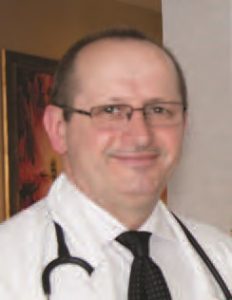 Dr. Pidkaminetskiy is especially impressed with the community-oriented approach of the practice, as well as the convenience of close contact with his colleagues to expedite immediate consultations and sharing of vital patient information. Patients similarly appreciate the wide range of medical services and treatments provided by Trinitas and the ease with which care can be both delivered and accessed at the various practice offices.
Dr. Pidkaminetskiy is especially impressed with the community-oriented approach of the practice, as well as the convenience of close contact with his colleagues to expedite immediate consultations and sharing of vital patient information. Patients similarly appreciate the wide range of medical services and treatments provided by Trinitas and the ease with which care can be both delivered and accessed at the various practice offices. Jazmyn Thomas (pictured right), a current patient of the Medical Group, appreciated Dr. Baerga’s kindness before, during, and after having minor surgery. “He was very supportive,” said the Elizabeth resident. “I called him with questions every day, sometimes more than once, and he never made me feel like I was a bother. Even when he wasn’t in the office, he managed to get back to me right away. He made me feel a lot better about everything, especially because I had never had surgery before.”
Jazmyn Thomas (pictured right), a current patient of the Medical Group, appreciated Dr. Baerga’s kindness before, during, and after having minor surgery. “He was very supportive,” said the Elizabeth resident. “I called him with questions every day, sometimes more than once, and he never made me feel like I was a bother. Even when he wasn’t in the office, he managed to get back to me right away. He made me feel a lot better about everything, especially because I had never had surgery before.”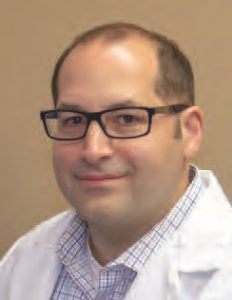
 The Trinitas Medical Group offers a large and growing staff of
The Trinitas Medical Group offers a large and growing staff of 
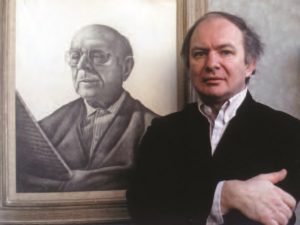
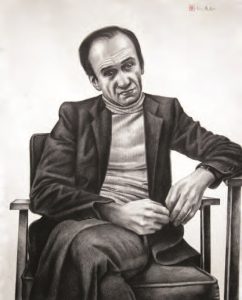

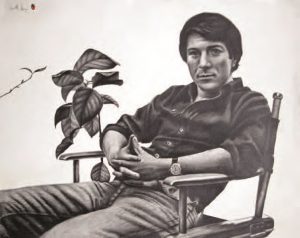










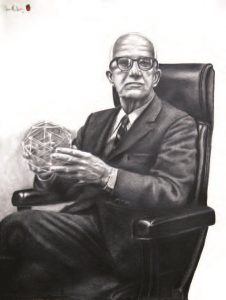
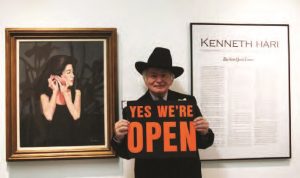
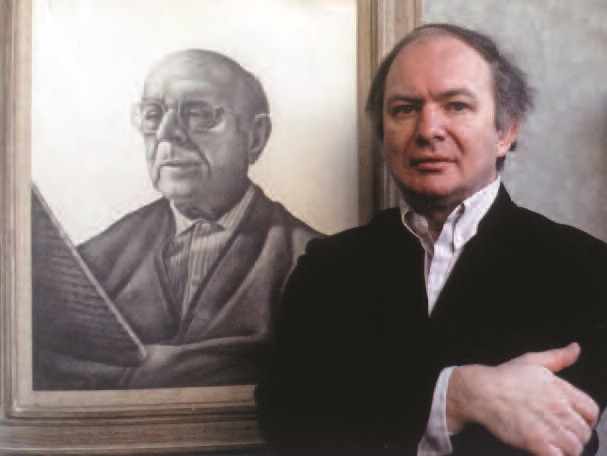









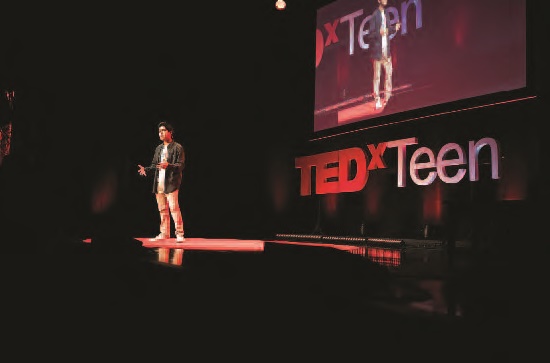
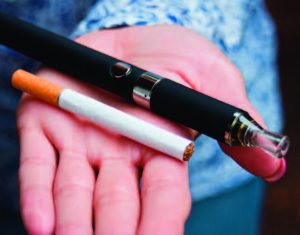


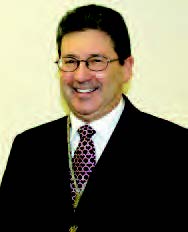 Adam Rowen, MD
Adam Rowen, MD
 Paragon Tap & Table • Beef Ramen
Paragon Tap & Table • Beef Ramen Arirang Hibachi Steakhouse • Wasabi Crusted Filet Mignon
Arirang Hibachi Steakhouse • Wasabi Crusted Filet Mignon Daimatsu • Sushi Pizza
Daimatsu • Sushi Pizza The Barge • Cioppino
The Barge • Cioppino Luciano’s Ristorante & Lounge • Warm Goat Cheese Salad
Luciano’s Ristorante & Lounge • Warm Goat Cheese Salad Morris Tap & Grill • The Monster Burger
Morris Tap & Grill • The Monster Burger Garden Grille • Grilled Chicken Paillard
Garden Grille • Grilled Chicken Paillard LongHorn Steakhouse • Outlaw Ribeye
LongHorn Steakhouse • Outlaw Ribeye Outback Steakhouse • Bone-In Natural Cut Ribeye
Outback Steakhouse • Bone-In Natural Cut Ribeye Arirang Hibachi Steakhouse • Volcano Roll
Arirang Hibachi Steakhouse • Volcano Roll Ursino Steakhouse & Tavern • House Carved 16oz New York Strip Steak
Ursino Steakhouse & Tavern • House Carved 16oz New York Strip Steak
 One of the more interesting developments in the science of cement is the elusive goal of creating a fracture-proof product. At some point, the weight a cement structure is asked to bear just overwhelms it and it begins to crack. (FYI, every building material has its “breaking point,” including steel). The primary challenge for ensuring fracture resistance is the structure of cement, in which everything in the mix sticks to everything else. That sounds good, but a structural engineer will tell you it’s not. It’s disorganized.
One of the more interesting developments in the science of cement is the elusive goal of creating a fracture-proof product. At some point, the weight a cement structure is asked to bear just overwhelms it and it begins to crack. (FYI, every building material has its “breaking point,” including steel). The primary challenge for ensuring fracture resistance is the structure of cement, in which everything in the mix sticks to everything else. That sounds good, but a structural engineer will tell you it’s not. It’s disorganized. Last December, a team of German biomimeticists announced in Science Advances that they had found a way to reorganize the structure of cement to create fracture resistance at the “nano” level. Biomimetics is a branch of science that is unfamiliar to most of us; it
Last December, a team of German biomimeticists announced in Science Advances that they had found a way to reorganize the structure of cement to create fracture resistance at the “nano” level. Biomimetics is a branch of science that is unfamiliar to most of us; it 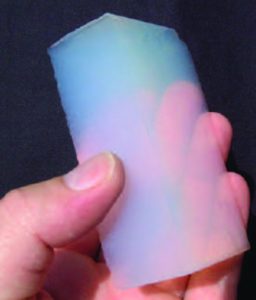 But wait. If you’re calling your contractor right now, put down the phone. Aerogel is hideously expensive in homebuilding quantities and won’t be available in insulating bricks for several more years. However, as with all good science, there are already folks working to up production, increase the economy of scale, and bring this product to market as rapidly as possible.
But wait. If you’re calling your contractor right now, put down the phone. Aerogel is hideously expensive in homebuilding quantities and won’t be available in insulating bricks for several more years. However, as with all good science, there are already folks working to up production, increase the economy of scale, and bring this product to market as rapidly as possible. What else is on the homebuilding horizon? Hold on to your hat. We’ve been following the progress of 3D printing in this magazine for many years, though primarily for its applications in the medical and lifestyle areas. Enter the wiz kids at MIT. In 2017, they announced that they were developing a system that would enable builders to 3D print the fundamental structure of an entire house faster and cheaper than traditional construction materials.
What else is on the homebuilding horizon? Hold on to your hat. We’ve been following the progress of 3D printing in this magazine for many years, though primarily for its applications in the medical and lifestyle areas. Enter the wiz kids at MIT. In 2017, they announced that they were developing a system that would enable builders to 3D print the fundamental structure of an entire house faster and cheaper than traditional construction materials. Unconstrained by the rules of engineering that currently restrict how homes are constructed using standard methods and materials, a 3D printed home could open the door to entirely new kinds of living spaces. And these homes would go up fast. Indeed, a prototype of the system completed a 12-foot domed structure with a 50- foot diameter in just over 12 hours. It was made of foam-insulated concrete and conformed to all of the local building codes. The printer’s prototype, mounted on a tracked vehicle, employed a precision-motion industrial robotic arm, which controlled a construction nozzle (similar to the ones that spray insulation). Unlike traditional 3D printers, where the nozzle is locked into a set structure, the MIT printer was unencumbered and could print anything, anywhere.
Unconstrained by the rules of engineering that currently restrict how homes are constructed using standard methods and materials, a 3D printed home could open the door to entirely new kinds of living spaces. And these homes would go up fast. Indeed, a prototype of the system completed a 12-foot domed structure with a 50- foot diameter in just over 12 hours. It was made of foam-insulated concrete and conformed to all of the local building codes. The printer’s prototype, mounted on a tracked vehicle, employed a precision-motion industrial robotic arm, which controlled a construction nozzle (similar to the ones that spray insulation). Unlike traditional 3D printers, where the nozzle is locked into a set structure, the MIT printer was unencumbered and could print anything, anywhere. That means a home could be constructed to address its specific environment. For instance, walls could have varying degrees of insulation or thickness based on which direction (e.g. north or south) they faced, or be tapered or curved to perform in windy environments. Wiring and plumbing could be pre-inserted into the forms the printer creates. Complex shapes and overhangs that would simply be too costly or too difficult to create with traditional building methods, could be produced from various materials with the push of a button. In a paper published in Science Robotics, the researchers pointed out that the construction industry hasn’t changed in hundreds of years: “Buildings are rectilinear, mostly built from single materials, put together with saws and nails.” Obviously, the scientific community is aiming to change this narrative.
That means a home could be constructed to address its specific environment. For instance, walls could have varying degrees of insulation or thickness based on which direction (e.g. north or south) they faced, or be tapered or curved to perform in windy environments. Wiring and plumbing could be pre-inserted into the forms the printer creates. Complex shapes and overhangs that would simply be too costly or too difficult to create with traditional building methods, could be produced from various materials with the push of a button. In a paper published in Science Robotics, the researchers pointed out that the construction industry hasn’t changed in hundreds of years: “Buildings are rectilinear, mostly built from single materials, put together with saws and nails.” Obviously, the scientific community is aiming to change this narrative. Bluetooth Padlock
Bluetooth Padlock
